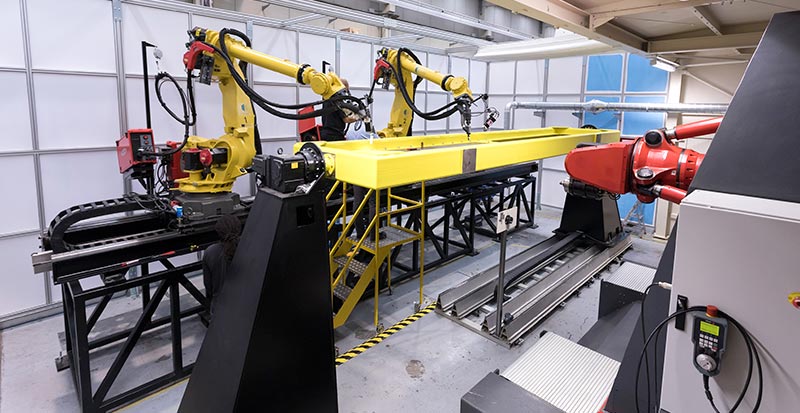The organizers of the Large Additive Subtractive Integrated Modular Machine (LASIMM) project say that the machine is now ready to test.
The LASIMM, intended to be one of the world’s largest hybrid manufacturing machines, will feature metal additive and subtractive capabilities for 3D printing large pieces of metal and large parts and structures for construction. It features capabilities for additive manufacturing (AM), machining, cold-work, metrology and inspection, making it suitable for the hybrid manufacturing of large engineering parts. The machine also includes a modular configuration of industrial robot arms and a milling robot – the first for additive manufacturing of aluminum and steel, and the second for machining away surplus material to provide the final finish. The LASIMM project has also developed software from a single machine process CAM towards a multi-machine multi-process CAM, driving hybrid machines where multiple processes are combined to manufacture the end component.

The machine is reportedly the first of its kind and is aimed at improving Europe’s advanced manufacturing industry by reducing costs and improving efficiency and production flexibility. The project members say that it could deliver a 20% reduction in time and cost expenditure, as well as a 15% increase in productivity for high-volume additive manufacturing production. The LASIMM was set up by the European Union’s Horizon 2020 research and innovation program that funded ten partners, including universities, research institutions and other technology providers, to produce a machine that can manufacture components for demanding industries directly from CAD models. It will now be tested to manufacture demonstrator parts designed by industrial end-users to take the machine’s capabilities to the limit.
‘While 3D printing for consumers and makers has received a great deal of publicity, it is within the industrial manufacturing and construction industries that this technology could have its most significant and lasting impact,’ said Eurico Assuncao, deputy director at the European Federation for Welding, Joining and Cutting and LASIMM project coordinator. ‘Its use has now reached a tipping point and this technological achievement will pave the way to enable entire construction infrastructures to be 3D printed in the future.’ To become part of the commercial application of the project's results, contact LASIMM.
This story uses material from LASIMM,with editorial changes made by Materials Today. The views expressed in this article do not necessarily represent those of Elsevier.

